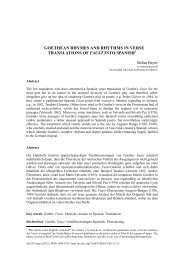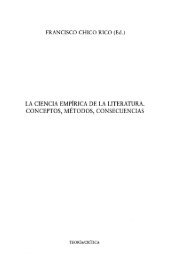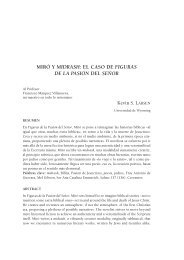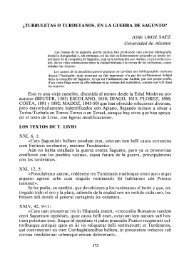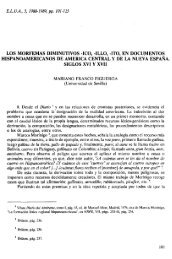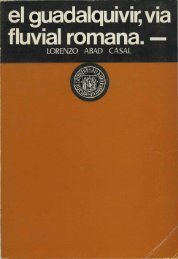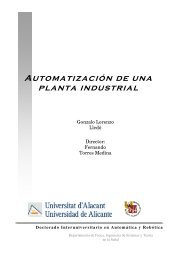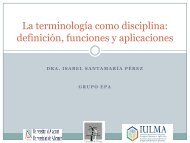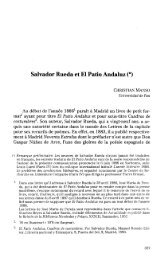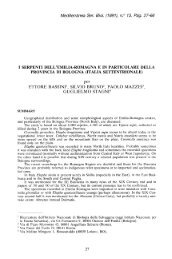ecological effects of marine protected areas empafish project ...
ecological effects of marine protected areas empafish project ...
ecological effects of marine protected areas empafish project ...
You also want an ePaper? Increase the reach of your titles
YUMPU automatically turns print PDFs into web optimized ePapers that Google loves.
EMPAFISH Booklet no. 1 Ecological <strong>effects</strong> <strong>of</strong> Atlanto-Mediterranean MPAs in the EU<br />
Ustica Island: <strong>ecological</strong> studies<br />
� General<br />
o Fish assemblage<br />
Some circumstantial information on the fish fauna <strong>of</strong> the Ustica island prior to<br />
protection is available in De Crist<strong>of</strong>aro (1970). In this report a total <strong>of</strong> 75 fish<br />
species were listed.<br />
Fish assemblage structure has been studied only after the effective<br />
enforcement <strong>of</strong> the reserve. Structure and composition <strong>of</strong> coastal fish<br />
assemblages were investigated by underwater visual census (UVC) and<br />
experimental trammel nets (Arculeo et al. 1994, 1996; Vacchi et al. 1998; La<br />
Mesa & Vacchi 1999; Palmeri 2004). Most studies focused on the nektobenthic<br />
fish fauna associated to the photophilic rocky infralittoral (Vacchi et al.<br />
1998; La Mesa & Vacchi 1999), although patchy information on other habitats<br />
(e.g. barrens and seagrass meadows) are also available along the island<br />
coasts (Arculeo et al. 1994, 1996; Palmeri 2004). Overall 102 species were<br />
recorded, representing the 19.2% <strong>of</strong> the whole Mediterranean Basin (Riggio &<br />
Milazzo 2004). Among these 20 cryptobenthic species belonging to Blenniidae,<br />
Gobiidae, Tripterygiidae, Scorpaenidae and Gobiesocidae were recorded.<br />
Species composition, diversity and relative density <strong>of</strong> these cryptic species<br />
were also investigated in relation to habitat macro- and micro- characteristics<br />
(La Mesa et al. 2006), and a similar approach was used to assess microhabitat<br />
requirements <strong>of</strong> juvenile dusky grouper (Epinephelus marginatus) (La Mesa et<br />
al. 2002). Habitat selection and habitat use <strong>of</strong> two coastal species<br />
(Thalassoma pavo and Chromis chromis) was also investigated (Badalamenti<br />
2004).<br />
Findings worth mentioning for biogeographical and <strong>ecological</strong> reasons are the<br />
constant and increasing presence <strong>of</strong> some subtropical fish species mainly <strong>of</strong><br />
Atlantic origin – such as Sphyraena viridensis, Sparisoma cretense, Scorpaena<br />
maderensis, Thorogobius ephippiatus, Gobius vittatus and Caranx crysos<br />
(Vacchi et al. 1999) – although such information can be generally extended to<br />
the whole Southwestern Mediterranean region.<br />
o Benthic communities<br />
Riggio & Milazzo (2004) reviewed the major results <strong>of</strong> the scientific research<br />
carried out in the Ustica Island coastal waters (within 50 m depth) during the<br />
latest 30 years. The list <strong>of</strong> taxa censused showed that local species richness<br />
exceeds the values expected on account <strong>of</strong> the coastal perimeter and bottom<br />
area <strong>of</strong> the island. Benthic biodiversity described was on average 24.8% <strong>of</strong> the<br />
total Mediterranean Sea. This is definitely an underestimation since not all the<br />
habitats have been investigated in the Ustica waters.<br />
Phytobenthos (rodophytes, chlorophytes, pheophytes and phanerogams) with<br />
450 species represents 33% <strong>of</strong> the Mediterranean <strong>marine</strong> flora (Giaccone<br />
1967, 1968, 1983; Giaccone et al. 1985; Buia et al. 1999; Furnari et al. 2003<br />
67





